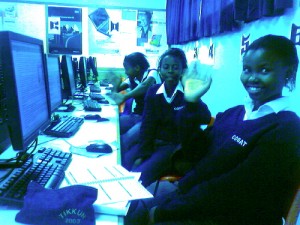What if each student had her own teacher at school? Would she benefit from individual attention, progressing at her own pace, learning the way that best suited her? Clearly, it's economically and physically impossible to provide each student a separate teacher, but technology can be a powerful tool in helping that process along.
In today's Wall St. Journal, writer Barbara Martinez discusses how teachers are using laptops a few hours a day in the classroom to help kids learn to read at their own pace. What they call the "blended learning" approach allows students at P.S. 100 in the Bronx to combine online learning with traditional teaching techniques -- with the educator taking the role of a facilitator -- and is proving to show great results.
"The more motivated and interested they are, the better able they are to want to do their work," said Sarah Kougemitros, a fourth-grade teacher at the school. She notes that the programs are full-fledged curriculums that come with great ideas for captivating student interest. For instance, her students are now enjoying the topic of chocolate, which includes fiction and nonfiction reading and writing online, as well as geography about the origins and manufacturing of cocoa beans.
Teachers can adjust the level of difficulty in reading groups: some kids can read on their own, while others have the books read to them as they follow along. For those who have difficulty reading, or have learning disabilities, this kind of individualized curriculum can engage them in the content without alienating them from the learning process.
In a similar example, 93% of one fourth-grade math class that used a blended online program in Texas met or exceeded standards, compared to 66% who passed in a class that didn't use the program, the article says.


